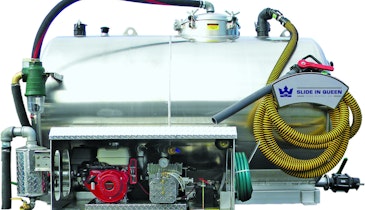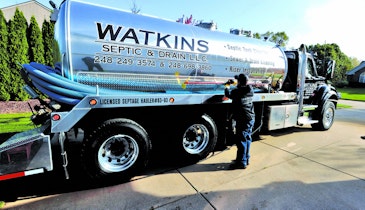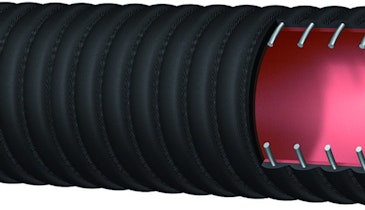Question:
Our state is finally in the process of developing a code for septic systems. They have some wild ideas, and they aren’t listening to any of our concerns as installers and pumpers. Shouldn’t our industry be involved a little in getting a good code? We know a lot more about sewage than those people at the state capital.
Answer:
I agree with you. Industry professionals should definitely have input to the onsite code for a state. And local units of government should also have input. They will be enforcing the code at the local level. A person with sound technical knowledge and field experience should provide the leadership for the code. The state agency responsible for developing the code must be involved, but only in an advisory capacity.
I recently corresponded with a state that was developing an onsite code. It was apparent there was not sound technical expertise for onsite systems. And there was no evidence of input from the local level.
Another state was recently written about in Pumper dealing with onsite systems. That state had already failed several times to develop a code because they accepted no input from the local counties. Their present attempt was also being challenged at the local level.
A technically sound and enforceable state code must include advice from the local level and not be just from the top down. Unless there are local inputs and advice, the code will likely not be practical or successful.
A technical resource person must guide the process of writing a code, and involve those who will be affected by the code. I believe the technical resource person should be a full-time faculty member of the state land-grant university, and also a member of the Extension Service. County Extension directors will provide continuing feedback about state conditions. The Extension professor will conduct or direct needed research, attend technical meetings to maintain expertise, and present educational materials and programs.
SOIL PHYSICS
The technical knowledge needed for onsite sewage treatment systems is a combination of engineering, soil science and biological science. The hydrau-lics of flow through pipes and the soil is used in the design of every treatment system.
The hydraulics of flow through a soil is even more complicated. First, an adequate knowledge of soil physics is required. The flow of liquid through the soil may be by capillary attraction or gravity. Open channels, such as worm holes, may allow effluent to flow through them if the supply is adequate. A pan layer in the soil profile will restrict the downward movement of liquid. Subsurface ponding may lead to the failure of a soil treatment unit.
The flow through the soil under an established biomat will be partially saturated flow. Sound research has established that biomat is needed to provide treatment in a gravity flow system. In addition to the physical properties of soils, knowledge is needed about the chemical and biological properties of soils.
A septic tank or aerobic tank that receives the domestic sewage is a simple, yet complicated, biological and biochemical system. An understanding of bacteriology is important to know the conditions favorable for bacterial action, both aerobic and anaerobic. Soil bacteria thrive and multiply as the effluent flows through the soil profile. They are necessary for the adequate treatment of effluent.
Book learning alone is not adequate to be an “expert” in onsite sewage treatment. While technical knowledge is necessary as a foundation, it is also absolutely necessary to get into the field. Onsite sewage treatment professionals, such as you, who have the experience of installing successful systems, know what works and what doesn’t work.
However, in some cases, adequate treatment does not take place with some techniques used at the local level. As an example, a seepage pit excavated into water-bearing coarse sand and gravel may be successful from the viewpoint of flushing the toilet. But such a system is an absolute disaster as far as adequate treatment is concerned. The technical resource person must point this out, and such practices must not be allowed in the code.
NOT IN BOOKS
Adequate knowledge about onsite sewage treatment systems will likely not be found in college textbooks or manuals. Most of my knowledge on septic systems came from onsite professionals in the field. Continu-ing contact with the onsite industry by the technical resource person is necessary.
A state code must be technically sound, but must also be enforceable at the local level. Unless local units of government understand and can enforce the provisions of the code, it will not be effective. As the code is developed, it should be separated into subject matters such as sewage tanks, house sewer and venting, and soil treatment units such as trenches, mounds, effluent distribution, pumping stations, etc.
Each of these subject matters should be developed for the code by a subcommittee with members from both the onsite industry and local units of government. Sound technical practices from other state codes may be used, if they are appropriate. However, care must be taken not to copy poor practices. Including distribution boxes in a code is a classic example of an often-copied, but ineffective technique.
The code should also have a provision for adopting new techniques. There are many innovative people in the onsite industry with excellent ideas. The code should have a provision so new products can be used, if they can be tested in the field. However, the testing program must be adequate and thorough, and if the product does not perform as claimed, there must be adequate space on the site to install a proper system.
No matter how great the state code was when adopted, changes will be needed as time goes on. Research may show new treatment techniques to be effective. Some of the original provisions may have had flaws when the code was enforced. It is a good idea for the state to establish an advisory committee with members from the onsite industry and local units of government. The committee would make recommendations for changes.
A FINAL WORD
A successful state code needs to be developed from the bottom up, have continuing sound technical advice, have an ongoing educational program, and provision for introducing new products and ideas.





